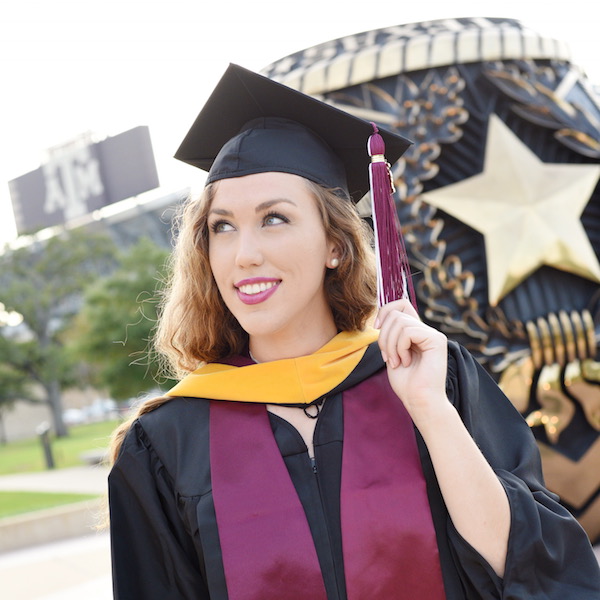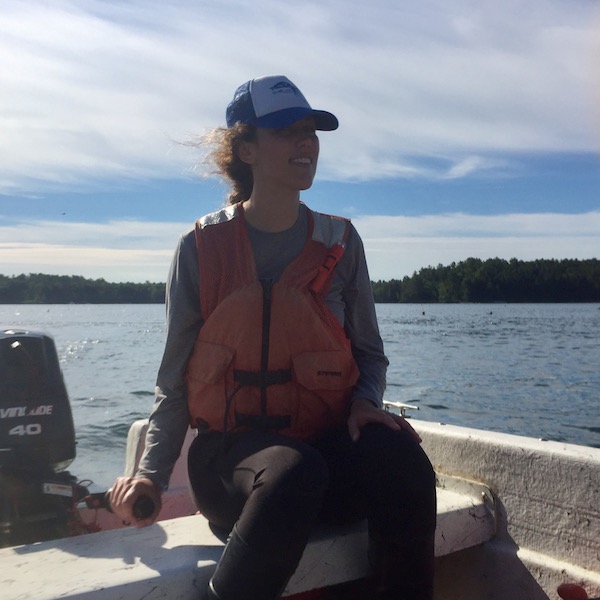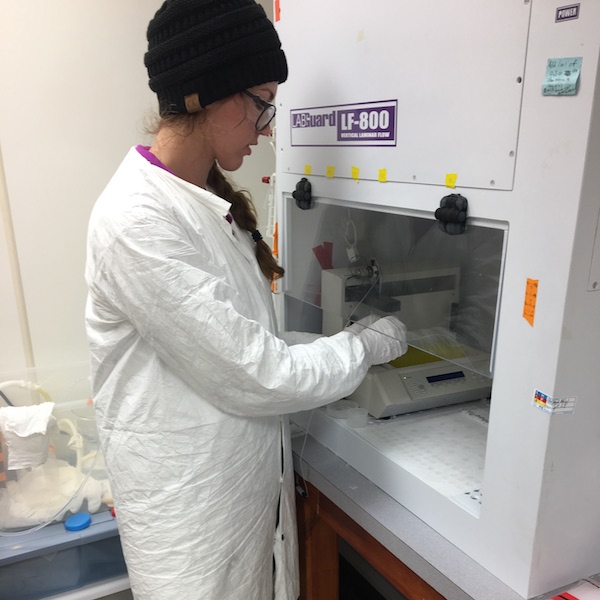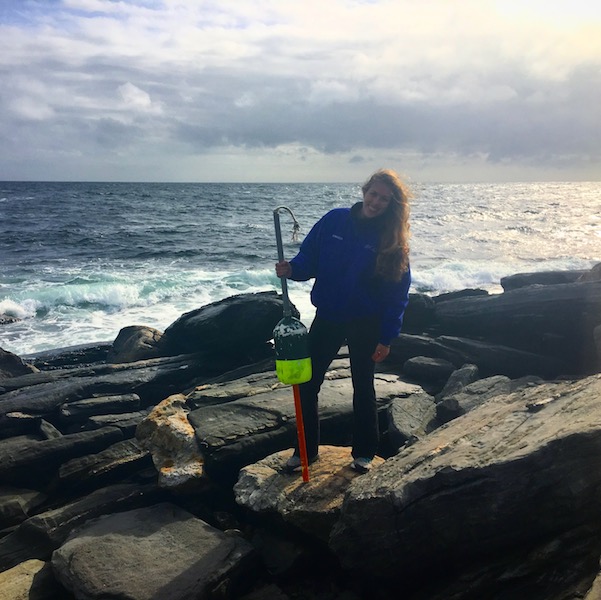

After completing a bachelor’s degree in environmental studies at the University of San Diego, Kimber De Salvo set out to find a master’s degree program that would be able to compliment her passions for both marine science and geology.
It was not until after meeting with an assistant professor fromTexas A&M University’s Department of Oceanography, Dr. Jessica Fitzsimmons, that De Salvo realized Texas A&M was a great fit for her interests and was where she wanted to continue her education. She credits this decision to Fitzsimmons’ passion for research, along with the innovative project that Fitzsimmons pitched to her — studying iron colloids in high salinity areas, which coincided with her own interests.
“I found Jess and fell in love with her enthusiasm for science; she is one of the most passionate scientists I have ever met,” said De Salvo. “I was also captivated by this project because it would pioneer a new analytical method in oceanography. This new approach had never been done before and I knew it could contribute to the scientific community.”
Field Research At The Darling Marine Center
During her time in the oceanography master’s program, De Salvo had the opportunity to conduct field research at the University of Maine Darling Marine Center.
There she was able to collect precious samples for her research, which was not an easy job.
While doing field research collecting water samples in Maine, De Salvo and colleagues weathered a wind storm that knocked out the center’s power, leaving them with only one generator for the entire facility. All of her samples were destroyed.
“At the Darling Marine Center, there was a storm with up to 60 mph wind gusts,” she said. “Trees had fallen, power outages lasted for 10 days, and when you have precious samples, that’s terrifying, especially if they have to be kept frozen.”
Without a generator to keep her samples frozen, they thawed, causing De Salvo to have to stay another three weeks to re-do her field research and re-take samples. She persevered and was able to finish the work she’d started.
“She battled weeks-long power outages, freezing temperatures, and just about every technical difficulty that her instruments could provide,” Fitzsimmons said. “Yet she still produced beautiful data and graduated on time with a fantastic new analytical method.”
Mastering New Methods
De Salvo’s master’s research focused primarily on iron colloids in the ocean. Iron colloids, a subset of dissolved iron, may contribute a significant source of bioavailable iron to phytoplankton, the main primary producers of the ocean. In order for phytoplankton to perform photosynthesis and produce more than half of the world’s oxygen, they need iron.
With large areas of the ocean being iron-limited, it is imperative to understand the sources of bioavailable iron. De Salvo’s background in geology and marine science made it an easy decision to jump on-board with colloidal iron research.
These iron colloids are a “not-fully-dissolved chunky material that does not sink in the water column,” she said. Thus, iron colloids could be readily available and crucial source of iron for phytoplankton, which live near the surface of the ocean. Her research generated interesting results.
“I found out that iron colloids are actually dynamic, and there are seven different class sizes, with varying chemical characteristics, that were found throughout all of my samples in different locations,” De Salvo said. “Closer to land we found similar trends as far offshore, which was really interesting.”
“Scientists have thought of colloidal iron being bound to organics as a tight-knit relationship; and we found out that relationship may not be as close knit as previously thought. This is the first study to evaluate this chemical composition as a function of colloidal size in the ocean. “
Along with these results, De Salvo, Fitzsimmons, and their collaborator, Dr. Mark Wells from the University of Maine, invented and refined a method of revealing the chemical composition of iron colloids as a function of size, using combined filtration and chemical sensor technologies.
“It was crazy because the standard operating procedures for these methods had not been achieved in the ocean before, and we had to figure out how to develop the method,’” De Salvo said.
“Kimber’s new method can, for the first time, reveal the chemical composition of iron as a function of size in high-salt seawater solutions,” Fitzsimmons said. “Her new method is at the cutting-edge of trace metal oceanography today.


Moving On To Texas Sea Grant
Upon graduating with her master’s from Texas A&M, Texas Sea Grantoffered De Salvo a position on its communications team. Texas Sea Grant works in alliance with National Oceanic and Atmospheric Administration to issue grants to scientists and students around Texas, to gain knowledge of the oceanic environment and relay information from that research to stakeholders and Texas legislators, helping inform science-based decisions for local and statewide communities.
“I had been so intrigued by Texas Sea Grant as a graduate student,” De Salvo said. “They’re the intersection between funding science and making that science functional for Texans to improve the understanding, wise use and stewardship of Texas coastal and marine resources.”
From Master’s Student To Science Communicator
Texas Sea Grant’s mission excites De Salvo and she has taken to her new role naturally, she said. “I have a huge passion for taking complicated science and digesting it down to help anybody understand, and I absolutely love it.”
De Salvo’s position mainly involves creating social media campaigns for the program, as it spreads awareness to a larger audience.
“Social media is an area Texas Sea Grant wants to expand upon just because you can reach so many people, and it fits in with our mission to educate,” De Salvo said.
Her master’s research advisor, Fitzsimmons, believes the experience in her master’s program not only benefitted De Salvo as a scientist but also improved her communication skills, giving her the ability to succeed at Texas Sea Grant.
“This project challenged Kimber to learn how to talk about detailed, technical sciences to a broad and general audience and make them understand its importance,” Fitzsimmons said. “She took this task very seriously, and she is gifted at simplifying complex sciences clearly and persuasively.”
Communicating science to the public benefits the community as a whole, De Salvo has learned.
“Some people are not exposed to science,” she said. “Communicating science is so important because it can inform decision making.”

